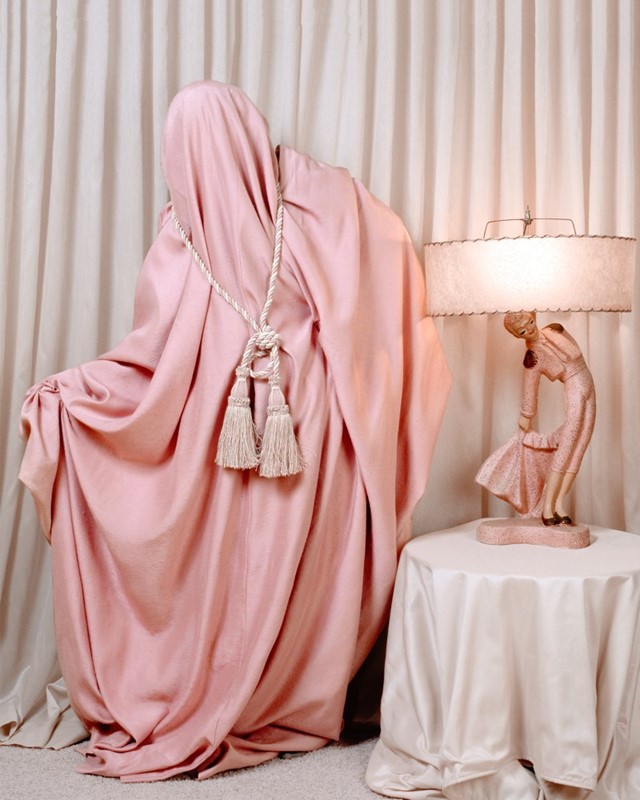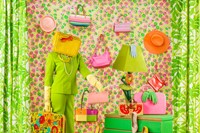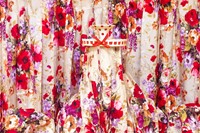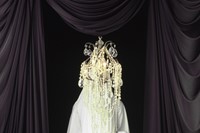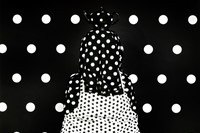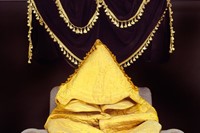Patty Carroll’s new monograph, Anonymous Women, challenges the complex relationship between domesticity and oppression
The relationship between women and the home is a complex and storied one; from an early age we’re conditioned to take pride in our surroundings – and yet, the perceived frivolous femininity of home-making has more than a hint of patriarchal suppression about it. In this context, individual objects are elevated to the status of the symbolic – the sensuous attraction of a textile or a lamp becoming intensified and strained. Objects, and our relationship to them, slip quickly into the realm of the uncanny.
This is precisely the tension American photographer Patty Carroll seeks to manipulate in her work. Her ongoing series of Anonymous Women, a collection of several works created over a number of years, is newly published this month in a monograph by Daylight Books. In it, imagined homes become part of their anonymous protagonists’ backdrops, their owners concealed from our view by decorative textiles so as to explore the way women are comforted and constrained by the home, and the material things that make it. Women find solace in Carroll’s domestic scenes, but they’re also suffocated – quite literally suppressed by the upholstery which swathes them.
AnOther spoke to Carroll in Texas, where she has just opened an exhibition of her work at the College of Architecture’s Wright Gallery, to discuss domesticity, drapery and the commercial gaze.
On how the Anonymous Women series began...
“Before we came to England, all of my work was about American culture – sleazy motels, bars, restaurants, resorts, on the road at night, resort areas – it was about getting away from home. But when I found myself really away from home, I had an identity crisis. I married late, and I was already known as Patty Carroll, as a teacher, as a photographer – I had my own career. Although in London I was teaching at the Royal College, and at the London College of Printing, I was suddenly known as Mrs Jones – even my students were calling me Mrs! I was shocked at this traditional British society based on class and upbringing, compared to the US, where it’s all about money. I was looking at myself as a woman and trying to cope with that; when you’re displaced everything shifts, and as I was going through this emotional turmoil, I started this series. A model I knew from the Royal College would come to meet me once a week, and I painted her white, like a classical sculpture and I started to put things on her head, so that her identity was obscured and she was only recognisable through these decorative domestic objects. That’s how the whole thing started.”
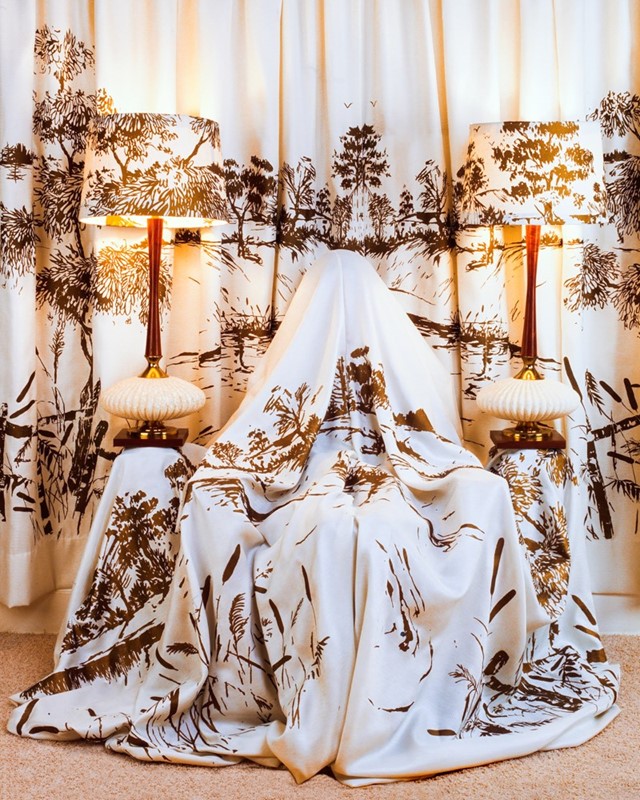
On women and the home…
“I suppose – perhaps it’s weird to say – that men don’t have the same relationship with the home. We say ‘a man’s home is his castle’, but that is more about conveying a sense of power, of domination, rather than to be part of the home. I really wanted this to be about women, and the affinity they feel towards the home as an extension of identity. Not only for me, but for many women, how we present our living space is how we present ourselves.”
On material obsessions…
“I do feel like we are smothered by our possessions, they do overtake us. I mean for this work to be a celebration of our relationship with stuff, but also a critique of it. The viewer can ask themselves questions or make fun of themselves. I recently met a lady in Texas who told me she had a dire cabin in Minnesota and she had to perk it up – so she went out and bought some red calico curtains, and then, in the same place she found a red tablecloth, red plates – everything that matched. She said it was the cutest thing but it was also absurd, because guests couldn’t find their plate as it was camouflaged against the cloth! She was laughing about it, and it was wonderful – it’s this female impulse to make a place liveable and fun, but the realisation of how absurd that can get.”

On Martha Stewart…
“After the women’s liberation movement in the 70s, which was terrific, things like crafting and making fell away and they weren’t honoured any more. Then Martha Stewart came along with her shows about cooking and decorating and making stuff in a beautiful way, and as much as we make fun of her I think she brought back a sense of feeling that it’s ok to do these things. Nowadays, with Pinterest and Etsy, people are making things and selling them and responding to these objects for the home. It’s almost overwhelming.”
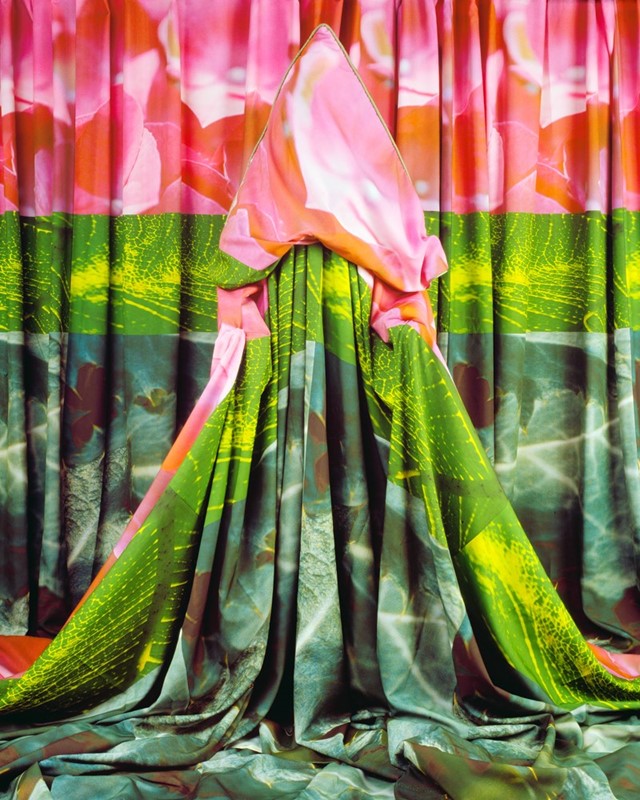
On where she sources her fabrics…
“It started with vintage drapery and fabrics. I had a ranch house in Indiana when we came back from England, with an original 50s pink kitchen, pink stove, sink, oven, pink everything. It had the original drapes in it, and I started to go to thrift stores, antique malls, flea markets, estate sales and find things to restore the place to the perfection of the 1950s. Along the way, I started to find drapes and other things that started to feed into both my home-making and my art. I also have friends who own a drapery business in Chicago called Workroom Couture Home and they make beautiful drapes; so I’d go and raid their attic and borrow things. I studied graphic design, so I have always been oriented towards making things aesthetically strong and when I started to take pictures I got to explore that kind of visual as much as I wanted.”
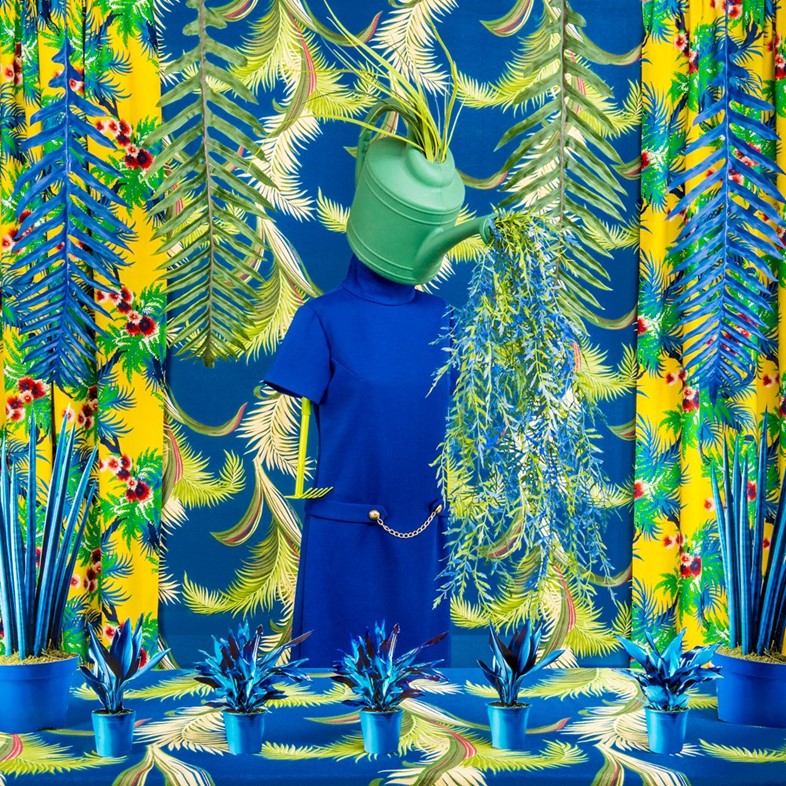
On her aesthetic…
“My work has always been about the cracks between fiction and non-fiction. I don’t think my images are pretty, but I want them to be nice to look at, I want them to be visually stimulating so the viewer is allowed to think about the deeper meaning.”
On the commercial gaze…
“I was very concerned with how women are portrayed and how photographs of women are used. I’m tired of how women are portrayed in the media. I didn’t want to enter into that. Another thing that influenced me growing up were the habits of the nuns at my Catholic school. These long flowing fabrics were their identity; you never knew who the nun was out of the habit, and that is both constraining and liberating.”
Anonymous Women by Patty Carroll runs until March 16, 2017, at Wright Gallery, Texas.
